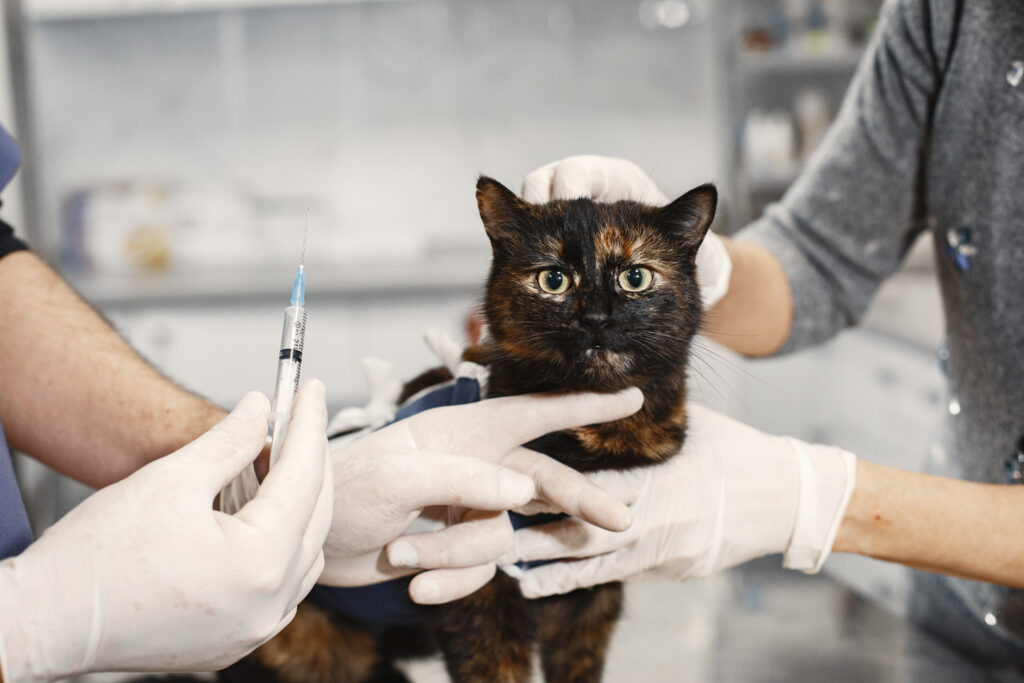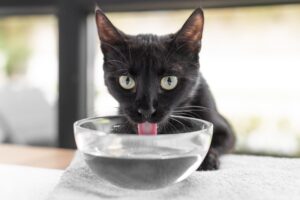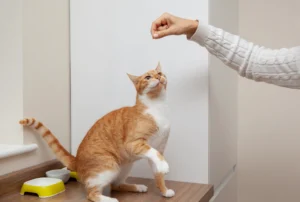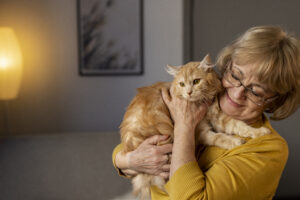Introduction
When it comes to protecting our feline companions, the feline leukemia vaccine is often presented as a must-have preventative measure. Veterinarians across the United States routinely recommend this vaccination as part of standard cat care protocols. However, many cat owners remain unaware of certain critical aspects related to the feline leukemia vaccine that deserve careful consideration.
As responsible pet parents, we need to understand both the benefits and potential risks associated with any medical intervention, including the feline leukemia vaccine. This comprehensive guide explores some lesser-discussed facts about this common vaccination that could significantly impact your decision-making process when it comes to your cat’s healthcare.
The feline leukemia virus (FeLV) poses a serious threat to cats, particularly younger ones with developing immune systems. While the feline leukemia vaccine offers protection against this dangerous virus, there are important considerations that may not be emphasized during routine veterinary visits.
In this article, we’ll delve deep into four concerning facts about the feline leukemia vaccine that might change your perspective on this common feline immunization. Our goal isn’t to discourage vaccination but rather to promote informed decision-making based on complete information.

Understanding Feline Leukemia Virus and Its Vaccine
Before exploring the lesser-known aspects of the feline leukemia vaccine, it’s essential to understand what feline leukemia virus (FeLV) actually is and why vaccination is commonly recommended.
What is Feline Leukemia Virus?
Feline leukemia virus is a retrovirus that affects cats worldwide. The virus compromises a cat’s immune system, making them susceptible to various infections and diseases. FeLV can lead to:
- Anemia
- Lymphoma and other cancers
- Secondary infections due to immunosuppression
- Reproductive issues
- Potentially fatal conditions if left untreated
FeLV spreads primarily through close contact between cats, particularly through saliva during grooming or sharing food bowls. It can also transmit through bite wounds, from mother cats to kittens, and occasionally through urine, feces, or nasal secretions.
The Feline Leukemia Vaccine Explained
The feline leukemia vaccine was developed to protect cats against this serious viral infection. Currently, there are several types of feline leukemia vaccines available in the United States:
- Inactivated whole virus vaccines
- Recombinant vaccines
- Subunit vaccines
The feline leukemia vaccination protocol typically begins when kittens are around 8-12 weeks old, with a booster shot administered 3-4 weeks later. Following initial vaccination, veterinarians generally recommend annual boosters, although the feline leukemia vaccine schedule may vary based on a cat’s lifestyle and risk factors.
While the feline leukemia vaccine has undoubtedly saved many feline lives, there are important considerations that deserve closer examination. Let’s explore four facts about this vaccine that aren’t commonly discussed during routine veterinary visits.
Scary Fact #1: The Feline Leukemia-Vaccine Isn’t 100% Effective
One of the most important facts about the feline leukemia vaccine that often goes unmentioned is that it doesn’t provide complete protection against the virus. Despite receiving full vaccination, some cats may still contract feline leukemia if exposed to the virus.
Understanding Feline Leukemia Vaccine Effectiveness
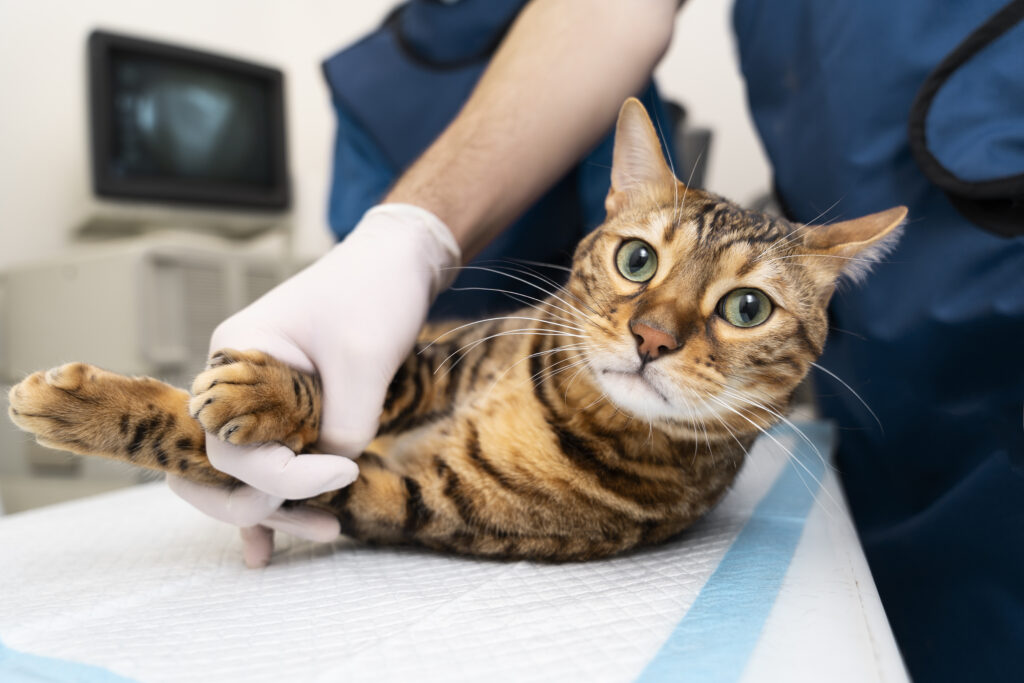
Studies examining feline leukemia vaccine effectiveness show varying results, with protection rates typically ranging from 70% to 85%. This means that approximately 15-30% of properly vaccinated cats may still become infected if exposed to FeLV.
Dr. Richard Ford, emeritus professor of medicine at North Carolina State University’s College of Veterinary Medicine, notes that “No vaccine is 100% effective, and the feline leukemia vaccine is no exception. Vaccination reduces the risk of infection but doesn’t eliminate it entirely.”
This limited effectiveness raises important questions about the universal recommendation of the feline leukemia vaccine for all cats, particularly when considering potential feline leukemia vaccine side effects.
Risk Assessment is Critical
Given the less-than-perfect feline leukemia vaccine effectiveness, cat owners should work with their veterinarians to conduct proper risk assessments. Factors to consider include:
- Whether the cat lives exclusively indoors
- Exposure to other cats of unknown FeLV status
- Presence of known FeLV-positive cats in the household
- Community cat population density in your area
- Your cat’s age and health status
For indoor-only cats with no exposure to potentially infected felines, the actual risk of contracting FeLV may be extremely low. This brings up the question: is feline leukemia vaccine necessary for every cat regardless of lifestyle? The answer isn’t always straightforward.
Scary Fact #2: Serious Feline Leukemia Vaccine Side Effects Are Possible
While veterinarians typically mention minor feline leukemia vaccine side effects like temporary soreness at the injection site or mild lethargy, more serious adverse reactions can occur but are discussed less frequently.
Potentially Serious Adverse Reactions
Some cats may experience significant feline leukemia vaccine reactions that owners should be aware of:
- Vaccine-Associated Sarcoma (VAS): This rare but serious complication involves the development of aggressive cancerous tumors at vaccination sites. Though uncommon (occurring in approximately 1 in 10,000 vaccinated cats), VAS can be life-threatening and often requires extensive surgery.
- Hypersensitivity Reactions: Severe allergic reactions, including anaphylaxis, can occur shortly after feline leukemia vaccine administration. These reactions require immediate emergency treatment.
- Immune-Mediated Disorders: Some cats may develop immune-mediated conditions following vaccination, including immune-mediated hemolytic anemia, thrombocytopenia, or polyarthritis.
- Chronic Inflammation: Long-term inflammation at injection sites can cause ongoing discomfort and potentially lead to other health issues.
The Journal of Feline Medicine and Surgery has published multiple studies documenting these more serious feline leukemia vaccine side effects. While these adverse reactions aren’t common, they represent significant risks that should factor into vaccination decisions.
Monitoring Your Cat After Vaccination
Following administration of the feline leukemia vaccine, it’s crucial to monitor your cat for unusual symptoms, including:
- Persistent vomiting or diarrhea
- Facial swelling or difficulty breathing
- Collapse or extreme lethargy
- Formation of a lump at the injection site that persists longer than 3 months
- Limping or inability to walk normally
- Reduced appetite lasting more than 24 hours
If you notice any of these symptoms after your cat receives the feline leukemia vaccine, contact your veterinarian immediately.
Scary Fact #3: The Feline Leukemia Vaccine May Not Be Necessary for All Cats
Despite being routinely recommended, the feline leukemia vaccine isn’t universally necessary for every cat. This fact often gets overlooked in standard veterinary practice.
Lifestyle-Based Vaccination Recommendations
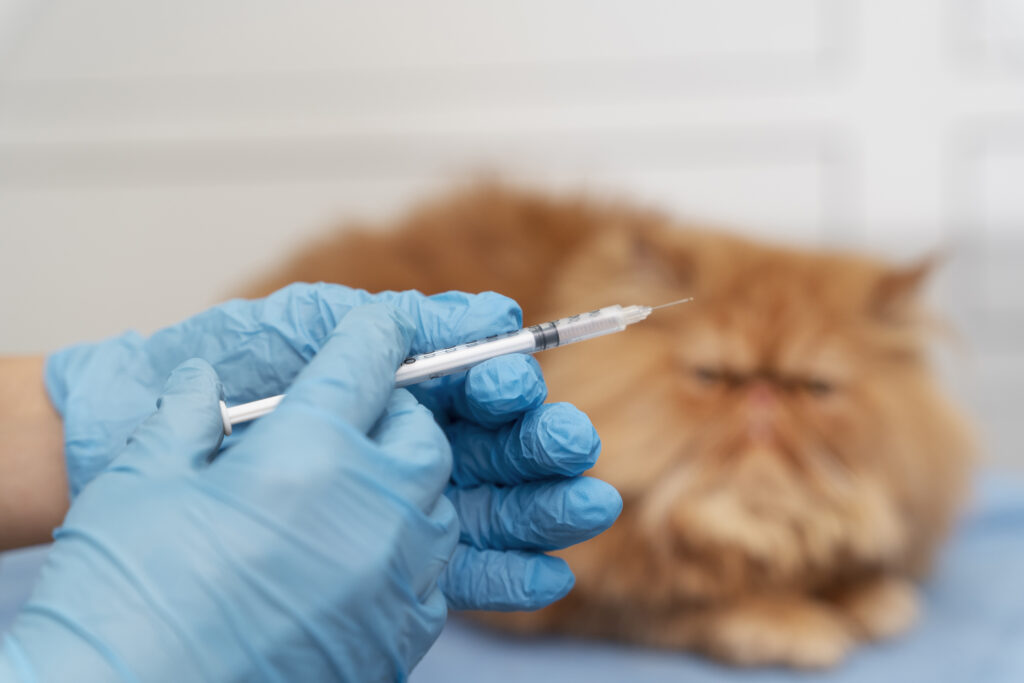
Major veterinary organizations, including the American Association of Feline Practitioners (AAFP) and the American Animal Hospital Association (AAHA), have moved toward more nuanced vaccination guidelines that classify the feline leukemia vaccine as “non-core” or lifestyle-dependent for adult cats.
According to these guidelines, the feline leukemia vaccine is strongly recommended for:
- Kittens (due to their immature immune systems)
- Outdoor cats or indoor-outdoor cats
- Cats living with FeLV-positive felines
- Cats in multi-cat households where new cats may be introduced
However, for adult indoor-only cats with no exposure to other cats, the feline leukemia vaccine may not provide benefits that outweigh potential risks.
The Age Factor in Feline Leukemia Vaccination
Another consideration is the feline leukemia vaccine age factor. Research shows that cats naturally develop increased resistance to FeLV infection as they mature. By about 4-5 years of age, many cats have significantly lower susceptibility to the virus.
This natural age-related resistance raises questions about the necessity of ongoing feline leukemia vaccine boosters throughout a cat’s entire life, especially for indoor adult cats with minimal exposure risk.
Cost vs. Benefit Analysis
The feline leukemia vaccine cost typically ranges from $25 to $75 per dose, depending on your location and veterinary practice. When considering the financial aspect alongside potential risks and questionable necessity for low-risk cats, the feline leukemia vaccine pros and cons warrant careful evaluation.
Dr. Michael Lappin, professor of infectious disease at Colorado State University’s College of Veterinary Medicine, suggests: “For indoor-only adult cats, the risks associated with feline leukemia vaccination may outweigh the benefits. Each cat’s situation should be individually assessed rather than applying a universal recommendation.”
Scary Fact #4: There’s Limited Long-Term Research on Cumulative Effects
Perhaps most concerning is the limited research regarding the long-term and cumulative effects of repeated feline leukemia vaccinations throughout a cat’s lifetime.
Gaps in Long-Term Safety Research
While initial safety studies are required for vaccine approval, comprehensive long-term studies examining the effects of receiving the feline leukemia vaccine annually for 15+ years (a typical cat’s lifespan) are notably lacking.
Some veterinary immunologists have raised questions about:
- Potential cumulative immunological impacts of repeated vaccination
- Whether vaccine components could contribute to chronic inflammation
- Possible connections to age-related diseases or autoimmune conditions
- The necessity and safety of maintaining the current feline leukemia vaccination protocol throughout a cat’s entire life
Dr. Jean Dodds, a respected veterinary immunologist, notes: “We need more research on the long-term effects of repeated vaccinations in cats. Until we have better data, a more individualized approach to the feline leukemia vaccine schedule is warranted.”
Alternative Approaches to Consider
Given these concerns, some veterinarians now advocate for:
- Titer Testing: Measuring antibody levels to determine if revaccination is truly necessary
- Extended Vaccination Intervals: Lengthening the time between feline leukemia vaccine boosters for lower-risk cats
- Risk-Based Assessment: Making vaccination decisions based on each cat’s individual exposure risk
- Combination of Preventative Measures: Using regular testing and preventative care alongside more selective vaccination protocols
Making an Informed Decision About the Feline Leukemia Vaccine
After considering these four concerning facts, how should cat owners approach decisions about the feline leukemia vaccine? Here’s a balanced framework to guide your thinking:
Step 1: Assess Your Cat’s Actual Risk
The first step is determining your cat’s genuine risk of exposure to feline leukemia virus:
- Does your cat go outdoors?
- Do you bring new cats into your home regularly?
- Are there FeLV-positive cats in your household?
- Is your cat a kitten or young adult (under 1 year)?
Cats at higher risk generally benefit more from the protection offered by the feline leukemia vaccine, potentially outweighing the risks.
Step 2: Discuss Feline Leukemia Vaccine Pros and Cons With Your Vet
Have an open conversation with your veterinarian about the specific feline leukemia vaccine pros and cons for your cat’s situation. Good questions to ask include:
- Given my cat’s lifestyle, what’s the actual risk of FeLV exposure?
- Which type of feline leukemia virus vaccine do you recommend and why?
- What specific feline leukemia vaccine side effects should I watch for?
- Is the feline leukemia vaccine required by law in our area?
- How often do you recommend the feline leukemia vaccine for my cat’s specific situation?
- What alternatives might be appropriate for my cat?
Step 3: Consider Testing Before Vaccination
For adult rescue cats or cats with unknown vaccination history, consider FeLV testing before administering the feline leukemia vaccine. This approach:
- Prevents unnecessary vaccination of already-infected cats
- Provides baseline health information
- May identify cats that require special care rather than vaccination
Step 4: Implement a Holistic Preventative Strategy
Remember that vaccination is just one component of protecting your cat from feline leukemia virus. A comprehensive approach includes:
- Regular veterinary examinations
- Appropriate testing when indicated
- Limiting exposure to cats of unknown health status
- Proper nutrition to support immune function
- Stress reduction strategies to maintain optimal health
Prevention Beyond the Feline Leukemia Vaccine
While making informed decisions about the feline leukemia vaccine is important, prevention goes beyond vaccination alone. Here are additional strategies to protect your cat from FeLV:
Testing New Cats Before Introduction
Always test new cats for FeLV before introducing them to your household. This simple precaution can prevent exposing your existing cats to the virus.
Quarantine Protocols
If you rescue or foster cats, implementing proper quarantine procedures can prevent disease transmission, including FeLV.
Environmental Management
For multi-cat households or catteries, proper environmental management practices like:
- Regular cleaning and disinfection
- Appropriate housing density
- Stress reduction strategies
- Separate food, water, and litter boxes
These measures can significantly reduce the risk of disease transmission even when the feline leukemia vaccine is used.
Conclusion: Balancing Protection and Risk
The feline leukemia vaccine has undoubtedly played a significant role in reducing the prevalence of FeLV infection in domestic cats across the United States. However, like all medical interventions, it comes with both benefits and risks that must be carefully weighed.
The four concerning facts we’ve explored—limited effectiveness, potential for serious side effects, questionable necessity for all cats, and limited long-term research—highlight the importance of individualized vaccination decisions rather than a one-size-fits-all approach.
By understanding these facts about the feline leukemia vaccine and working closely with your veterinarian, you can make truly informed decisions about your cat’s healthcare. Remember that the goal is optimal health and protection for your feline companion, which may or may not include administration of the feline leukemia vaccine depending on your cat’s specific circumstances.
As research continues to evolve and our understanding of feline immunology improves, vaccination protocols will likely become increasingly personalized. Until then, awareness, education, and open communication with your veterinary care provider remain your best tools for navigating decisions about the feline leukemia vaccine.
Additional Resources for Cat Owners
For more information about feline health and vaccination, consider exploring these trusted resources:
- American Association of Feline Practitioners Vaccination Guidelines
- Cornell University College of Veterinary Medicine Feline Health Center
- The Merck Veterinary Manual – Feline Leukemia Virus
- PetsPump – Complete Guide to Cat Vaccinations
- PetsPump – Understanding Common Cat Health Issues
Disclaimer: This article is provided for informational purposes only and is not intended to replace professional veterinary advice. Always consult with a qualified veterinarian regarding the appropriate vaccination protocol for your individual cat.


